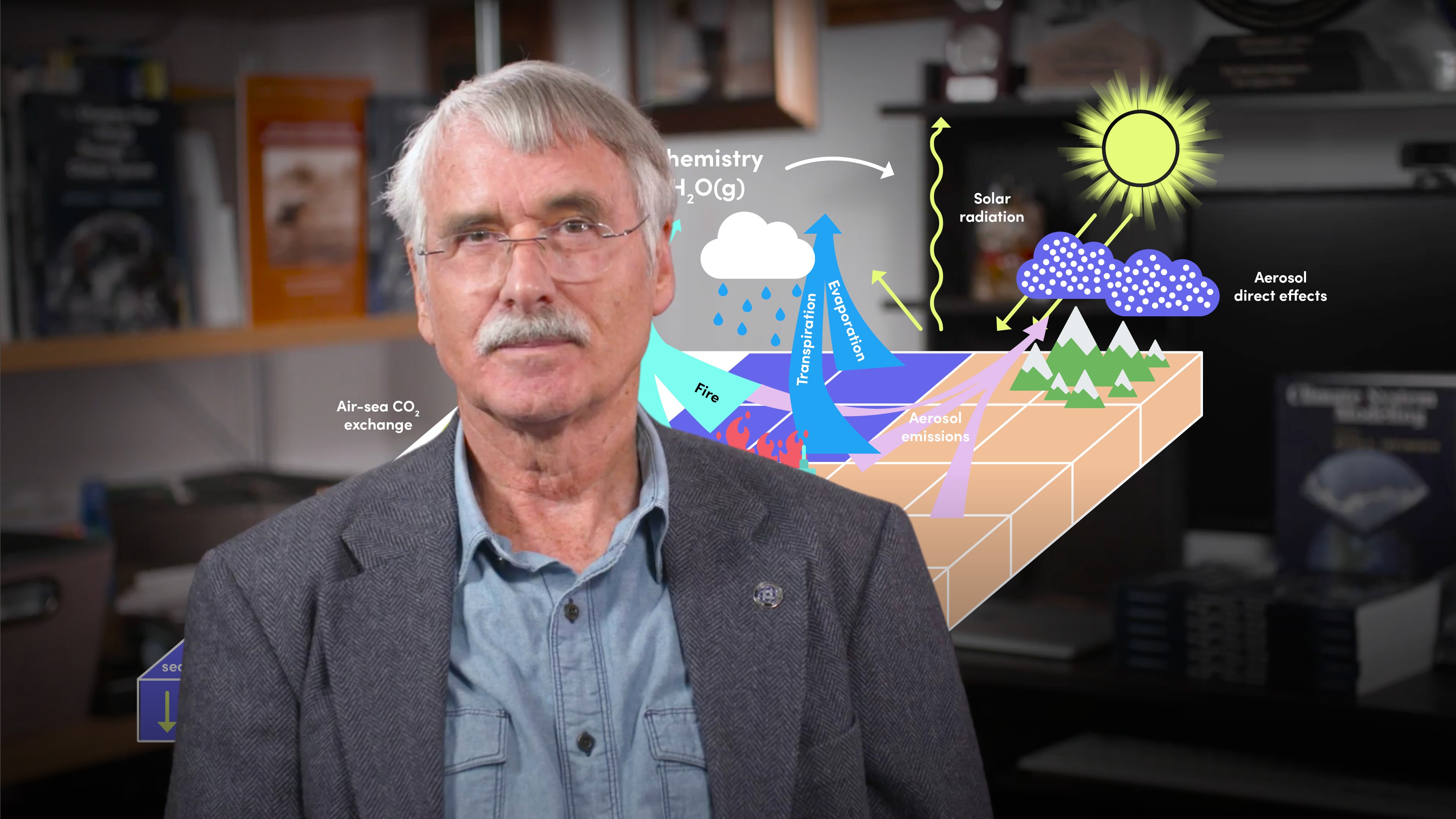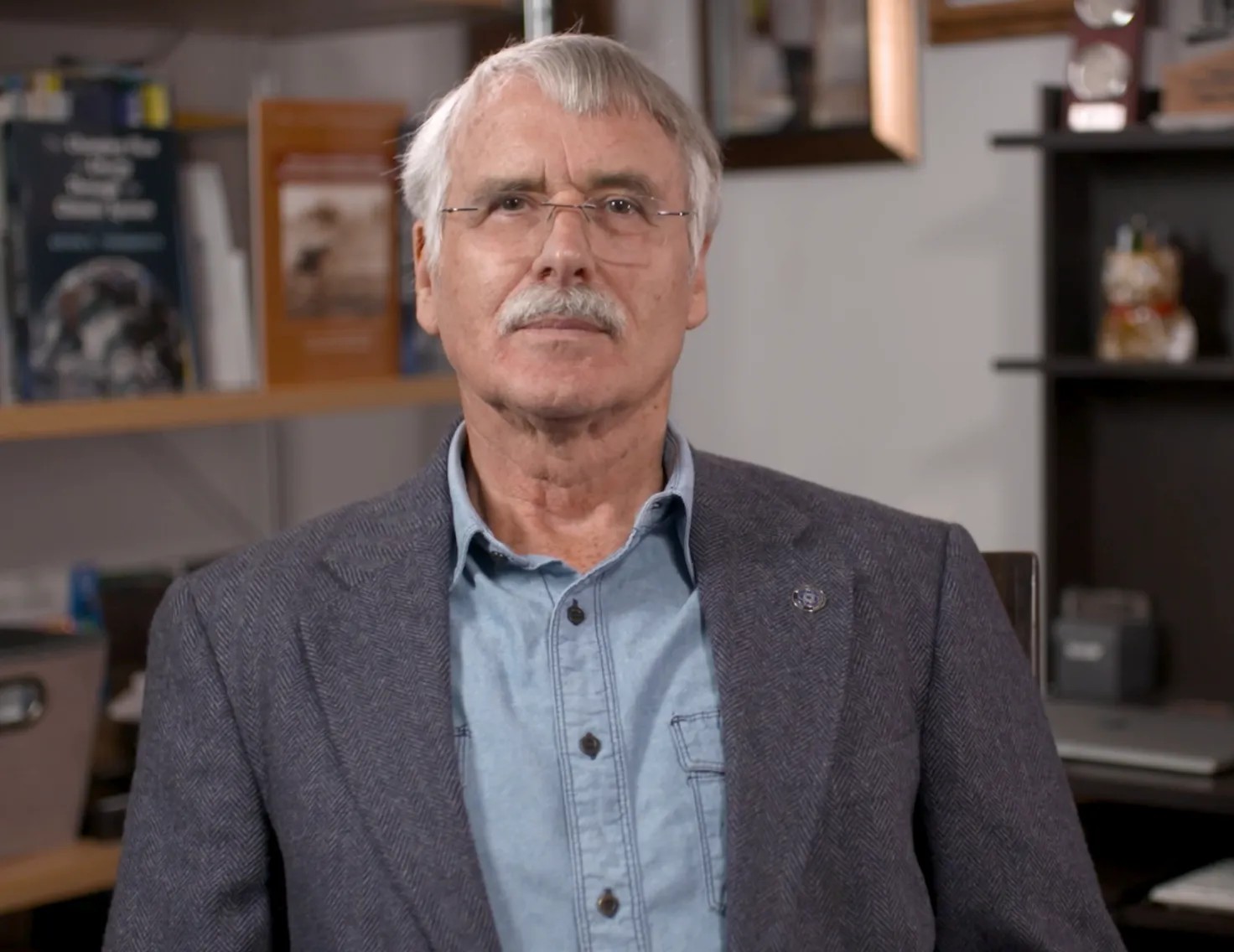
A Closer Look at Climate Models

Kevin Trenberth
Former Coordinating Lead Author of the IPCC
In this video, Kevin Trenberth provides a deep dive into climate models by outlining the importance of models and the approach to modelling. He also discusses Numerical Weather Prediction (NWP) models, climate models and the challenges faced. Lastly, he discusses the difference between predictions and projections.
In this video, Kevin Trenberth provides a deep dive into climate models by outlining the importance of models and the approach to modelling. He also discusses Numerical Weather Prediction (NWP) models, climate models and the challenges faced. Lastly, he discusses the difference between predictions and projections.
Subscribe to watch
Access this and all of the content on our platform by signing up for a 7-day free trial.

A Closer Look at Climate Models
19 mins
Key learning objectives:
Understanding the standard approach to modelling using NWP models
Understand how climate models evolved with the origins of supercomputers
Understand the difference between predictions and projections
Overview:
Climate models play an important role in helping scientists to understand and mitigate climate change. Climate models essentially developed as an extension of daily weather forecasting but on a much larger scale and timeframe. These models have become more accurate and are now vital in ensuring the right decisions are made to combat climate change.
Subscribe to watch
Access this and all of the content on our platform by signing up for a 7-day free trial.
What is the standard approach to climate modelling and what are NWP models?
The standard approach to predicting climate change involves analysing observations and coding it into a numerical form and solving using computers. A 4D model of the Earth is used with specified elements on grid-cells and simulations are made for each cell and the findings from one cell are transferred to neighbouring cells to help model the transfer of energy flow in the real world. The size of each grid cell is referred to as the spatial dimension of the model and that determines which phenomena can be included in the model and simulated to make predictions. A model with higher-resolution implies it has a larger number of small grid cells
Numerical Weather Prediction (the NWP) models rely on a high-resolution computer based model of the atmosphere to make forecasts. They establish a starting point (real time conditions) and then blend that with new observations to make predictions usually for upto 2 weeks and then a new starting point is used. Data and imagery from satellites are combined and a 4D assimilation of all observed data takes place in the model framework. The predictions basically carry forward information from past observations to the current time. This newly calculated observed state.
How did climate models evolve after the development of supercomputers?
Climate models run on a much larger scale and timeframe as opposed to NWP models. They incorporate ocean, land surface, cryosphere and biosphere, their interactions and include all of the processes or “forcings” that occur within and amongst the major components.
In the 20th century models, biogeochemistry was not specified and may have been diagnosed rather than added as an input to the model itself. Supercomputers have led scientists to add ever more factors, processes and inputs along with higher resolutions to climate models to produce extremely accurate simulations. Climate systems are now essentially Earth System Models that generate huge data outputs exceeding volumes of several petabytes. This is because of factors such as the deep ocean component of the climate system, which takes several millennia to reach equilibrium. It is impossible to incorporate and resolve all processes and interactions within the system. This issue is overcome by a process called parameterization where rather than resolving these components on the grid, they are integrated and factored into the model itself.
What are Integrated Assessment Models (IAMs)?
IAMs are mathematical computer models based upon explicit assumptions about how the coupled human and natural system behaves. The modules describe the climate, carbon cycle, and the various human dimensions including population, politics, economics, standards of living, and societal behaviour. But IAMs are constrained by the quality and character of the assumptions and data that underlie the model. IAMs help calculate the costs and benefits of avoiding different levels of global warming (social cost of carbon)
What are the constraints/challenges with models?
A higher resolution model longer to run, hence, many phenomena are not explicitly included. Such as the complications of aerosols as models typically assume aerosol emissions continue in the same manner and pace. However, this changes rapidly and is dependent on many factors. To have more accuracy we need to be able to predict human behaviour, but this is not possible. For predictions over a decade, as we would also need to provide an initial state of the upper oceans. But these predictions have a reasonable level of success for only a period of a year or so. Other challenges include power consumption as a cloud-resolving climate model is estimated to consume 0.5 GW (equivalent of a small nuclear power plant)
What are climate projections?
It is very important to note the distinction between climate predictions and projections. The term projection is used because the result is dependent upon explicit “what if'' assumptions about the future forcings and behaviour of humans. Unlike NWP models, projections consider the changes that occur relative to each other rather than the absolute values used in prediction models.
The remove and overcome biases as follows:
- A controlled climate simulation is first run
- A climate change experiment is then run(with different assumptions)
- The difference between the first simulation run and the second experiment provides an estimate of the climate change
Additionally, instead of making “guesses” at the different forcings affecting the climate system, we can use different “emissions scenarios” under several (“You know”) “what if” situations
Subscribe to watch
Access this and all of the content on our platform by signing up for a 7-day free trial.

Kevin Trenberth
There are no available Videos from "Kevin Trenberth"





























